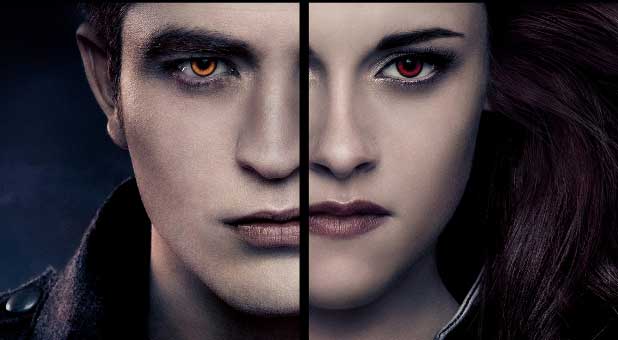A parent’s guide to the biggest teen vampire series in history
Since Stephanie Meyer’s Twilight series debuted in 2005, the four books about love-struck teenage vampires, werewolves and humans have taken the world by storm. More than 100 million copies have sold worldwide, and translation rights have been purchased in 50 nations. The first film adaptation, Twilight, generated $408 million internationally, followed by another $709 million for the second installment, New Moon. Still, the book’s largely young, female fans are anxiously awaiting today’s release of the final film in the series, Breaking Dawn Part 2.
Observers say the books about a vampire named Edward Cullen who hunts game rather than humans and falls in love with a teenage girl named Bella Swan is, at its core, a classic romance. Youth minister Kimberly Powers says that after talking with dozens of Twilight fans, she found the books tapped into a deep longing for love and meaning. “The girls weren’t coming for the vampires, they were coming for the love story,” says Powers, co-founder of Walk the Talk Youth Ministries and author of Escaping the Vampire. “These girls are just longing to be accepted. I’ve seen this for years and years. This is just another way of drawing them.”
Powers doesn’t denounce the series, but uses it as a tool in her book and at youth conferences: “I want girls to think, I thought Edward Cullen was the thing, but wow, Jesus is truly my rescuer and hero.”
Christians’ views on Twilight’s value as entertainment or a ministry tool vary widely. Even the series’ detractors say it has some positive elements. Edward and his vampire family resist their instinct to destroy human lives, Edward insists on remaining abstinent until marriage, and Bella refuses to end a life-threatening pregnancy. But they say the good doesn’t outweigh the bad.
“Edward is noble and he overcomes temptation and he takes care of Bella and … he waits until after marriage to have sex with her—he’s just a good guy,” says Steve Wohlberg, a California-based minister and author of The Trouble With Twilight. “But the danger is that he’s still a vampire, and … even though he has all these good qualities, he still has supernatural psychic powers, which links him to occultism.”
Although he says Twilight represents “a kind of sanitized vampirism,” Wohlberg worries that it may be part of a satanic ploy to desensitize youth to the evil of the occult, including vampirism. In the books, Bella is willing to give up her soul to be with Edward, but more alarming to Wohlberg is the real-life experience of the books’ Mormon author.
In interviews, Meyer, a married mother of three, has said the idea for Twilight came from a dream she had in June 2003, when she saw a sparkling handsome boy in a meadow who was in love with a human girl and having a hard time resisting his desire to drink her blood. When Meyer woke up from that dream, she says she felt compelled to start writing the story.
After Meyer wrote the first book, she says she had another dream in which Edward told her she’d sanitized the story. “Edward actually showed up and told me that I got it all wrong and, like, he exists and everything but he couldn’t live off animals … and I kind of got the sense he was going to kill me,” Meyer told MovieFone last year. “It was really terrifying and bizarrely different from every other time I’ve thought about his character.”
“You have to ask yourself from a Christian perspective, who is the author of this dream?” Wohlberg says. “I believe it came from Satan. … I’m just totally convinced that behind the scenes, we’re dealing with a supernatural battle between God and the devil.”











































